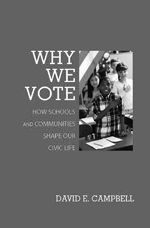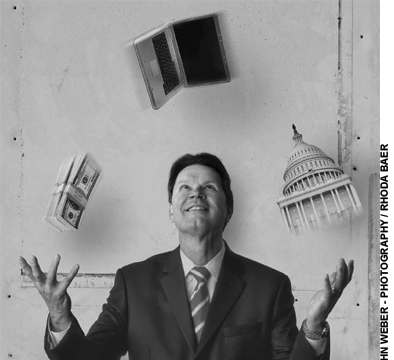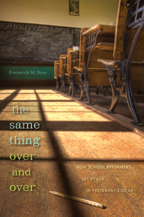 The Path to Purpose: Helping Our Children Find Their Calling in Life
The Path to Purpose: Helping Our Children Find Their Calling in Life
By William Damon
Free Press, 2008, $25.00; 217 pages.
As reviewed by Nathan Glazer
William Damon, a distinguished psychologist and the director of the Stanford Center on Adolescence, has long been interested, along with Howard Gardner and Mihaly Csikszentmihalyi, in the study of those who succeed, who do “good work” (the title of one of his books, coauthored with Gardner and Csikszentmihalyi),who care (Some Do Care, the title of another), and who manage to live fulfilled lives. The “purposeful” among us seem not to include much of today’s youth.
His latest book explores Damon’s concern that many American young people do not have meaningful or significant purpose to guide them, and do not get much help from their teachers. As he defines it, “Purpose is a stable and generalized intention to accomplish something that is at the same time meaningful to the self and consequential for the world beyond the self.” Getting good grades and into college does not in itself fulfill the demands of purposefulness; even the desire to achieve these ambitions so as to make a good living and raise a family, while better, does not fully qualify.
Since 2003 Damon, along with collaborators, has been engaged in a study of 1,200 American youths between the ages of 12 and 26. He subdivides the young people in his study into four categories: the disengaged, the dreamers, the dabblers, and the purposeful. He considers one-fifth of the subjects to be purposeful; 25 percent he sees as disengaged, “showing no signs of anything remotely purposeful”; another quarter he labels dreamers, who have aspirations but have taken no steps to realize them; and another 31 percent are dabblers, “who have actively tried out a number of potentially purposeful pursuits, but without a clear sense of why they are doing so or whether they will sustain these interests into the future.”
Damon also provides readers with a description of some of the purposeful youth in the study. Consider Ryan Hreljac, who at age 12 “had been working six years [sic] to raise money for drinking wells in parts of rural Africa…With help from his family, Ryan started a foundation, established a Web site…, and raised over $2 million…. Ryan has won numerous awards, including the World of Children Founder’s Award, considered the equivalent of a Nobel Peace Prize for youth service.”
Nina Vasan, 19, in her second year at Harvard, “has played sports competitively, hosted her own radio show, received the $50,000 grand prize at the Intel International Science and Engineering Fair, presented her research during the Nobel Prize festivities, was named one of the ten top Girl Scouts in the nation, ran the Olympic torch, and was a pageant winner as West Virginia’s Junior Miss. On top of all this, and more significantly, Nina founded and served as national President of American Cancer Society Teens….” And so on.
Clearly these are heroes, or superheroes, of purposefulness. Still, Damon is on to something when he detects a drift and flaccidness in much of American youth. He refers to the research of UCLA professor Alexander Astin on the values of college freshmen, which show a strong shift since the late sixties, away from “developing a meaningful philosophy of life” and toward “being very well off financially.”
Damon is astute in noting how little our schools encourage purposefulness. Teachers may open up for students a variety of areas of potential study and engagement, but without offering any significant guidance as to how to choose, what to choose, and to what larger end. He might have gone further in showing the dangers to teachers of giving such guidance today. Urging greater civic engagement and purposefulness in the public realm might in many communities be looked upon with suspicion. If the teacher chooses the traditional means of instilling purpose—teaching religion—other difficulties arise to inhibit him. The presidents of our early liberal arts colleges generally gave their students a summing-up course, whose very purpose was to instill purposefulness. What college president would do this today? He would rather call in a non-faculty celebrity to deliver some inspiring words at commencement.
What advice does Damon offer? He is cautious in his prescription for teachers, bolder in making suggestions for parents. His subheads might well be considered maxims: “Listen closely for the spark, then fan the flames”; “Take advantage of regular opportunities to open a dialogue”; “Introduce children to potential mentors”; “Convey your own sense of purpose and the meaning you derive from your work.” Well, that is a hard one. How many of us as parents have a “sense of purpose” and derive “meaning…from our work”?
Here Damon might well be faulted for taking for granted the model of professional life and assuming universal adoption of the values that classically are intertwined with the major professions, which in their ideal form do provide “purpose.” Only a minority of Americans are in occupations that give them at least a way of speaking about purpose in their lives. For most Americans, getting a job of some kind to support a family seems a sufficiently demanding purpose.
The notion of trying to discover what one is good at or for, and shaping a career to realize these potentialities, would appear very upper middle class to many Americans, even today, when most aspire to college. If they get there, most aim at careers that do not embrace the values typically identified with the classic professions. Damon is aware of the problem. He refers to the research that shows how many doing modest work gain satisfaction from their jobs and feel what they do is important. True enough, but when Damon asks that purpose include not only the intention to accomplish something that is “meaningful to the self” but that is also “consequential for the world beyond the self,” I believe he is making the path to purpose too difficult. We cannot expect even the first objective to be easily attainable for most people. Still, it is to the good that he has focused attention on the importance of an organizing objective for one’s studies and one’s life.
Nathan Glazer is professor emeritus of education and sociology at Harvard University.





